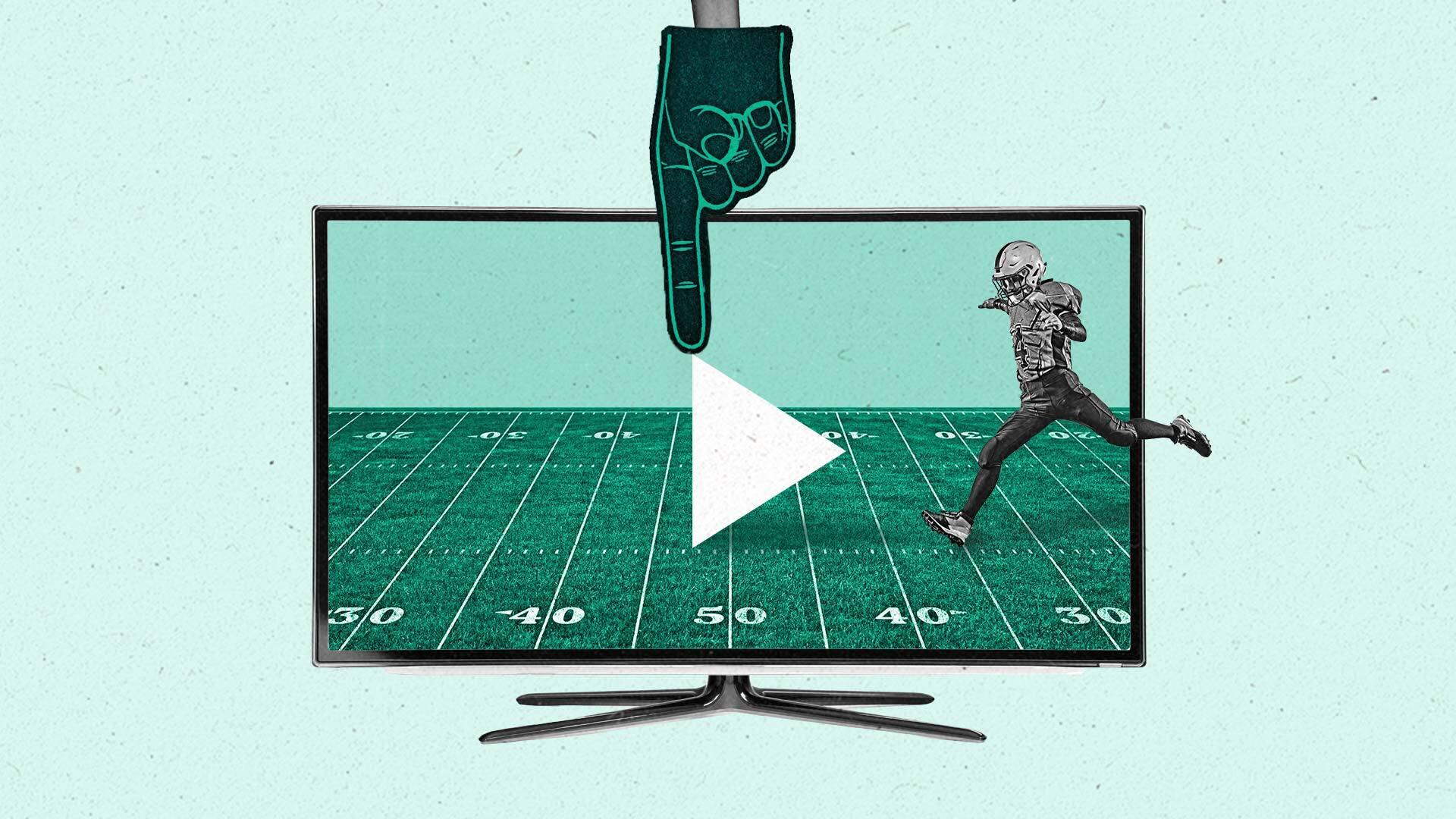‘The next great user experience’: How streaming is bringing sports leagues closer to fans

During Peacock’s exclusive kickoff-week NFL game on September 6, an unexpected prompt popped up on screen early in the game. “Want to hear directly from the NFL and its clubs?,” it asked. Choosing “Yes” would allow Peacock to share a viewer’s account information, such as an email address, with the league.
The Peacock prompt is yet another sign that connected TV (CTV) is enabling a more interactive experience for sports fans in ways that traditional linear TV can’t, experts tell The Current. It could connect consumers and leagues like never before.
“The bigger and stronger the relationship is with fans, the more ability leagues and teams have to leverage that information,” says Pete Giorgio, principal analyst for Deloitte’s sports division. “Every single league wants to understand who those fans are and deepen those relationships.”
Sports leagues are already investing more heavily in fan data to personalize their marketing and promotions, according to a recent Deloitte report. It's no wonder then that the major leagues have prioritized some kind of streaming component in their latest media rights deals.
“Data is everything to sports leagues,” says Anthony Amey, a professor of practice for sports media at Virginia Tech. “It is a major focus of every decision that is made.”
Fostering sports fandom
For fans who want to be as ingrained in their favorite sports as possible, they need to have access to a bevy of different TV networks and platforms. Take the NFL for instance: Thursday Night Football streams on Amazon Prime Video, Sunday matches are spread out across the broadcast networks (and their streaming counterparts) while Monday night football airs on ESPN.
For the leagues, that fragmentation of sports content is more of a feature than a bug, as it gives fans more ways to engage and the leagues more opportunity to learn who that fan is, according to Josh Walker, co-founder and CEO of Sports Innovation Lab.
And it’s not just about maintaining a loyal fanbase but fostering casual fans — and younger fans who might be consuming sports in different ways — into engaged consumers, too.
“The more interactive something is, the less lean-back someone is,” Walker says of the proliferation of sports streaming, adding that this justifies the enormous value of recent sports rights deals. The more engaged viewers are, the more value they can bring to advertisers and in turn, media companies.
15 ways to watch a game
The possibilities go far beyond the sort of prompt we saw on Peacock. The evolution of sports viewing over CTV will ultimately be a seamless integration of fans’ engagement across the sports ecosystem, experts tell The Current, as broadcasts and data become more intertwined, from fantasy and betting odds to merchandise.
“What you’re going to see is 15 different ways to watch a game: The in-depth sports-betting view with data everywhere; the shopping view; the co-view; the kids view; you’re going to have all these alt-streams,” Walker predicts. “And if you don’t want any of that, you’ll be able to turn it off. But that’s what we’re talking about here: ultimate personalization.”
We’re already starting to see that, says Scott Robson, a senior research analyst at S&P Global Market Intelligence.
“We’ve seen how Amazon has been able to offer multiple broadcast options for Thursday Night Football with enhanced statistics and probabilities,” Robson says. “I would expect to see more of that type of experimentation.”
ESPN is also on this trajectory. The network recently laid out a vision for its future that includes the launch of a new streaming product that would include all of its programming; integrate betting, stats and merchandise; and offer AI-powered personalized versions of SportsCenter.
Overall, sports engagement is reaching a major inflection point, where a number of factors — advancements in AI, cleaner data collection and widespread content distribution — are all happening at the same time.
“Those three things come together and you have a perfect storm of what the next great user experience looks like,” Walker says.
Subscribe to The Current
Subscribe to The Current newsletter